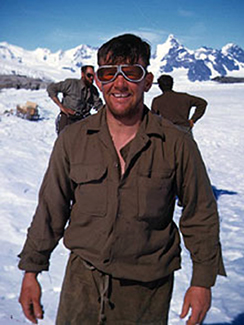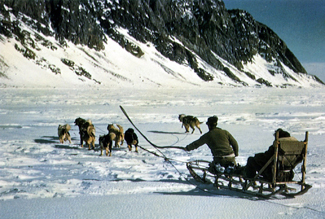From the Editor: Romancing the Bone –
Unreasonable notions and unrealistic expectations
Kevin Walton Memorial Lecture
QTC’s Community Consultation Tour
An Examination of Traditional Knowledge:
The Case of the Inuit Sled Dog, Part 3
'The Hunt'
OP Nunalivut 10
CAAT Returns to Baker Lake
New to the Crew: Introducing Adult ISDs to Your Kennel
IMHO: Some Things Never Change
Navigating This Site
Index of articles by subject
Index of back issues by volume number
Search The Fan Hitch
Articles to download and print
Ordering Ken MacRury's Thesis
Our comprehensive list of resources
Talk to The Fan Hitch
The Fan Hitch home page
ISDI home page
Editor-in-Chief: Sue Hamilton
Webmaster: Mark Hamilton
Print Edition: Imaged and distributed by the IPL students of the Ulluriaq School, Kangiqsualujjuaq, Nunavik
The Fan Hitch,
Journal of the Inuit Sled Dog International,
is published four times a year. It is
available at no cost online at:
https://thefanhitch.org.
Print subscriptions: in Canada $20.00, in USA $23.00, elsewhere $32.00 per year, postage included. All prices are in Canadian dollars. Make checks payable in Canadian dollars only to "Mark Brazeau", and send to Mark Brazeau, Box 151 Kangiqsualujjuaq QC J0M 1N0 Canada. (Back issues are also available. Contact Sue Hamilton.)
The Fan Hitch welcomes your letters, stories, comments and suggestions. The editorial staff reserves the right to edit submissions used for publication.
Contents of The Fan Hitch are protected by international copyright laws. No photo, drawing or text may be reproduced in any form without written consent. Webmasters please note: written consent is necessary before linking this site to yours! Please forward requests to Sue Hamilton, 55 Town Line Rd., Harwinton, Connecticut 06791, USA or mail@thefanhitch.org
Print subscriptions: in Canada $20.00, in USA $23.00, elsewhere $32.00 per year, postage included. All prices are in Canadian dollars. Make checks payable in Canadian dollars only to "Mark Brazeau", and send to Mark Brazeau, Box 151 Kangiqsualujjuaq QC J0M 1N0 Canada. (Back issues are also available. Contact Sue Hamilton.)
The Fan Hitch welcomes your letters, stories, comments and suggestions. The editorial staff reserves the right to edit submissions used for publication.
Contents of The Fan Hitch are protected by international copyright laws. No photo, drawing or text may be reproduced in any form without written consent. Webmasters please note: written consent is necessary before linking this site to yours! Please forward requests to Sue Hamilton, 55 Town Line Rd., Harwinton, Connecticut 06791, USA or mail@thefanhitch.org
The Inuit Sled Dog International
The Inuit Sled Dog International (ISDI) is a consortium of enthusiasts whose goal is the preservation of this ancient arctic breed in its purest form as a working dog. The ISDI's efforts are concentrated on restoring the pure Inuit Dog to its native habitat. The ISDI's coordinators welcome to your comments and questions.
ISDI Coordinator Canada:
Geneviève Montcombroux, Box 206, Inwood, MB R0C 1P0; gmontcombroux@gmail.com
ISDI Coordinator USA:
Sue Hamilton, 55 Town Line Road, Harwinton, CT 06791, mail@thefanhitch.org

Kevin Walton in Antarctica
The Kevin Walton Memorial Lecture
by Andrew Bellars, United Kingdom
We attended the Kevin Walton Memorial Lecture at the Scott Polar Research Institute in Cambridge on the 15th of April. It was the last official KW tribute. An extraordinary and eclectic throng of BAS, FIDS, Penguin Cruising Club, school friends, fellow teachers, friends, and family, assembled from all over UK, and some from abroad. The occasion was to see the family, headed by his wife Ruth, and to present Kevin's medals on long term loan to the Museum. However, it was not only a tribute to the extraordinary ninety-year-old, but also a tribute to the presence of British Antarctic Survey (BAS) 'Huskies' in the Antarctic from 1944 to 1994. Various presentations were made by family members, especially Jonathan Walton (also a Polar Medal holder) and his son Finn, who has now worked for BAS in the Antarctic. Bernard Stonehouse then entranced the meeting describing his time on Base with Kevin. This was followed by zoologist Julian Taylor's explanation of BAS dog sledging and diet, with fascinating details of measuring the pull of a team with strain gauges. (A nine-dog team would out pull the German Munich Olympic Rowing Eight!) Yours truly then explained the involvement of three Veterinary Surgeons with the dogs, and then John Killingbeck recounted how he was recalled some twenty-four years after serving on base to join John Sweeney in sledging journeys for the last two teams, before they were flown to Hudson's Bay to be given to the local Inuit from whence the original dogs had come. Tragically, the locals had grown away from a dog culture, and most of the dogs died in the first winter.
The Victoria Cross/George Cross (VC/GC) Committee was represented to see the medals handed over. These consisted of five WW2 Campaign Medals, including Burma, Europe, Russian Convoys, etc., but mainly, the Albert Medal and Bar, and Polar Medal and Bar. The Albert Medal has since become the George Cross, hence VC/GC Association. One Albert Medal was awarded because when Kevin's destroyer was hit forrad while on a Russian convoy, he descended into the flaming focsle on a rope, put out the fire and saved many lives.
Kevin's two Polar Medals were awarded for crevasse rescues; one of Major John Tonkin on the peninsula. This necessitated being lowered on a rope and chipping away at the ice until his arms were numb, hauled up to restore the circulation, and down again, twice, until successful. The second was for a rescue on South Georgia, in a much deeper crevasse. Of all these occasions, Kevin merely said that as the only trained mountaineer, he was the 'best at doing the knots'. He was, incidentally, a trained engineer.
It was a very remarkable day honouring a most remarkable man, who has touched so many lives.

Kevin Walton driving dogs in Antarctica, 1945.
Image from Portrait of Antarctica